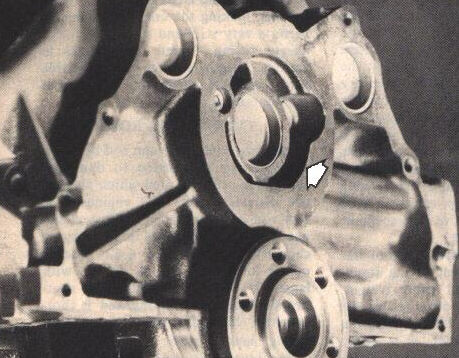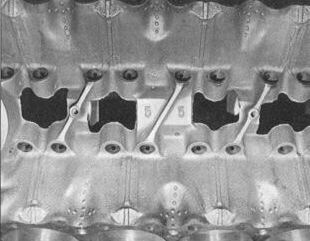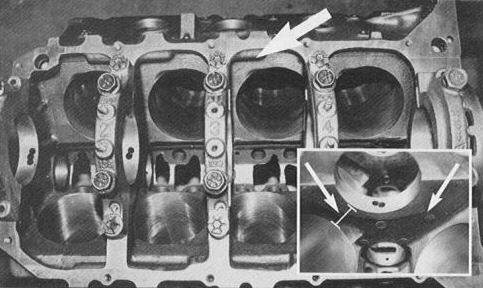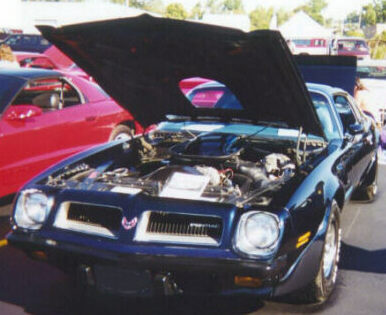
SUPER
DUTY INFORMATION & TRIVIA The following information comes from articles, books and documents I have collected since 1974. I hope you find it fun and interesting! It is a compilation of the hard work of many talented people. Though mostly in my own
words, I merely brought it all together on this page. I like to give credit where credit is due so if you see something on these pages that you believe belongs to you and is not properly credited as such, please write.
The production numbers for the SD Firebirds are as follows: 1973 SD-455 Trans-Am - 180 automatics - 72 four speeds - 43 Formulas. 1974 SD-455 Trans-Am - 731
automatics - 212 four speeds - 57 Formulas. That makes for a total factory production of 1,295 Firebirds. Out of the over 1200 cars, it has been estimated that fewer than 500 were ever sold to the general public and that less than 300 of those survived. As a personal
footnote, when I once stopped at the dealership to see if there was any word on when mine might be delivered, there were 3 white w/blue interior SD's waiting to be delivered to the Ford Motor Company. The 73 SD carried an official factory horsepower rating of 310 while the 74 was rated at 290 but actually, there was no difference between the two years. One story goes that at the time the 73's got rated, the plan was to use camshaft #493323 stamped with the letter "K". This cam never made it to production and ALL SD's used the "Y" stamped camshaft. The change came so close to production that the 73 rating was not corrected. The other story says that in 1974, GM Corporate Policy dictated that all vehicles in the 74 model year, must produce less than 300 horsepower. In order to get the 74 Trans Am on the market, the engineers simply changed the numbers on paper using the EGR valve change to explain it away to anybody asking. The latter is the one that makes the most sense when you look at the camshaft data and when all the testing was done. They had to know early in the game which cam they were going to use, so to say they made a change that late in the process doesn't seem to hold water. In any case, both ratings have been found to be "on the low side" as several independent tests have put it WELL above that. What is often misunderstood about this engine is that it was not a standard passenger car
engine souped up with add ons to make it more powerful. It was designed and built as a full bore racing engine then toned down to make it streetable and acceptable to the EPA. With nothing more than tuned headers, 11.9 :1 compression ratio (CR) domed pistons and a Ram Air IV profiled cam, GM documents show this engine dyno tested at a stunning 530 Horsepower!!!! Yes, that means if you replace the factory cast iron headers with a set of 32" tuned headers along with swapping out the stock 1.5:1 ratio rockers with the 1.65:1 Ram-Air IV rockers and take the compression ratio off of the 8.4:1 number
(this engine is capable of handling 12.5:1 pistons) you would be cranking a 450 to 500+ horsepower engine depending on how high you run the CR. In fact, in order to show the true nature of the Super Duty engine, GM took a stock SD and with the addition of headers, some
carb and ignition mods along with a 3.90 rear axle ratio, had members of the press turning 12 second ETs all day long at the GM Proving Grounds in Milford Michigan. Hi-Perfomance Cars Magazine reported it was an automatic car and it didn't much matter if the driver shifted it manually or if it was left in "D"...it performed consistently the whole day through. I've been assured through e-mail from one of the engineers involved, that there were absolutely NO
internal mods made. It's truly impressive how little it takes to power the Super Duty up to such an awesome level. Having said all that, in stock configuration running through the Firebird exhaust system, GM
Engineering memos put the figure at 371 SAE NET horsepower or approximately 426 to 440 gross horses. In order for the engine to handle all this horsepower as well as crank out the kind of RPM's
they were hoping for, Pontiac had to completely re-engineer the block. Way too many people think the SD and HO block are one in the same but nothing is further from the truth. It would take a whole page in itself to go over all the differences so I'll just stick to the ones that are easiest to spot, starting with the lifter valley. If you were to remove the intake manifold as well as the valley pan beneath it, you would be looking down into what is called the lifter valley. Thanks to an article titled "455 Comparo" by Jim Dietzler found in the Oct 98 edition of "High Performance Pontiac Magazine" we are able to see, through Mr Dietzler's hard work and photography, what it looks like. To keep a high performance engine from literally breaking itself to pieces, it must have ribbing added for strength. Here is what that looks like in a 455HO motor. Working towards a 7000 RPM capability, extra ribbing was a must. As you can see, they went all out making certain the 455SD block would hold together short of being hit with a Tomahawk Cruise Missle. Another area of concern was the main crankshaft bearing bulkheads. They had designed and produced the strongest Pontiac connecting
rod EVER for use in the SD, bar none!! In fact, many say the strongest in all of GM's inventory. Because of it's strength, extra attention was given to the bulkheads which hold the crankshaft in place. Since less of the power would be absorbed by the rods and more of it transfered directly to the crank, plus with the super high horses the SD would develop, they needed
that extra reassurance. Another big difference between the Super Duty block and all other Pontiac castings, is the built in provisions for a cam driven dry sump oiling system. Keep in mind that the SD455, with some minor EPA pleasing changes, is the same mill as the 366 Pontiac NASCAR engine, the same powerplant Herb Adams managed to squeeze 600 horses out of in his Silverbird Trans Am. Of course, Herb's engine was highly modified, but the block itself is the same as those resting under the hood of the production Super Duty Trans Am, simply bored out for the extra cubes. As you can see, just from these examples, the Super Duty 455 block stands alone in Pontiac's arsenal. I get a lot of questions about the manual transmissions used in the Super Duty cars. There is
a lot of confusion so here is the scoop. In 1973 if you ordered a 4 speed with the SD, you got the M-20 wide ratio Muncie. There were no other choices and in spite of what you might hear, it never came with the famous M-22 Rock Crusher. In 1974, Muncie got hit with a labor strike so GM had to scramble for a new vendor. They ended up replacing the Muncie unit with the Borg Warner Super T-10, but now offered a choice of either the M-20 Wide Ratio or the M-21 Close Ratio versions. (Pontiac still stuck with the Muncie "M" designations perhaps for paperwork reasons??!!) Anyhow, if you walked into the dealership in 1974 and ordered the SD with a 4 speed, you automatically got the M-20 Borg-Warner Wide Ratio tranny, the M-21 BW Close Ratio was NOT even listed on the option sheet if my memory serves me correctly. Therefore, unless the salesman offered it up as an option, the buyer would not have known it was
even available. People close to the Super Duty Project have claimed that of the 1295 73/74 SD's GM built, fewer than 500 went out to the general public. With that in mind, it's unclear how many of the 212 4 speed cars actually made it out on the street, and of those, how many were the Close Ratio Version. So when I make the claim that there are only "13 four speed cars known to still exist", that is in reference to the 1974 SD's equipped with the M-21 Close Ratio tranny, not 4 speed cars total. There are probably more that will show up
as time goes by and when they do, I have read over and over that the SD engine was a five hundred dollar option but actually it was closer to a grand. Base price on a 74 400 T/A was around $3500 while the base on the Super Duty car was around the 4 grand mark. Why the difference?? In order to get the LS2 (SD) option, you had to first purchase the standard 455 which was again, around 500 bucks over the 400 engine. The cost of the standard 455 was not included in the option list but was rolled into the base price instead. I have never actually read this anywhere but remember my salesman telling me how it worked. When you think about it, it would look "odd" on the order form if you had two different engine options selected and they may have worried it would be confusing enough that mix ups might have occured. I did read that early in the run, some SD cars WERE delivered with standard 455s in them. It was blamed on theft so Pontiac Motors had someone follow the cars down the assembly line to prevent this from happening again. Perhaps it WAS just confusion although the different color of the engine should have given them a clue,
The contents of this site are copyrightę 2000, Jamos1/Superduty455.com
Those probably ended up in a crusher after blowing off a few Mustangs on their test track!
455 HO Lifter Valley
Photo Is The Property Of Jim Dietzler/HPP
455 SD Lifter Valley
Photo Is The Property Of Jim Dietzler/HPP
The Upper Arrow Shows The Extra Material Put Into The Motor Mount Bosses On The Torque Side Of The Block. The Lower Arrows And Inset Show The Extra Material Put Into The Bulkheads.
Photo Is The Property Of Jim Dietzler/HPP
WITH SOME MINIMAL MACHINING
A DRY SUMP SYSTEM WILL BOLT RIGHT UP.
I'll change the number on my page accordingly.
as I explain in
PART 2!![]()
CLICK ON MY CAR TO GO
TO THE NAVIGATION PAGE![]()
All Rights Reserved



